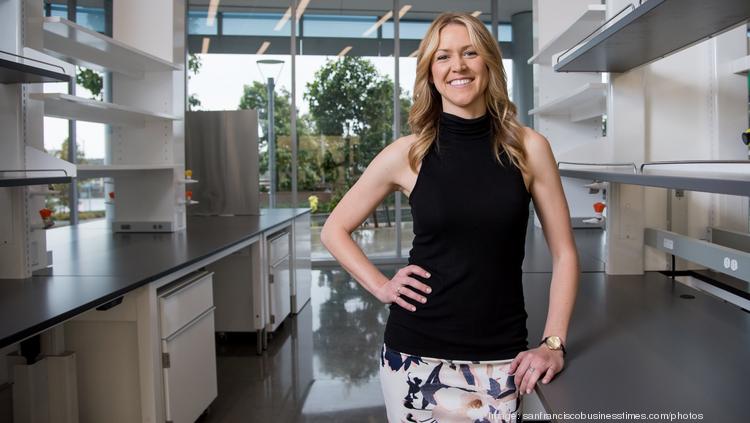
With new R&D projects finishing in 2017, life science companies hopeful for space crunch relief
New life sciences projects coming on-line this year are buoying hopes that 2017 may mark a turning point in easing a crunch for lab space in the Bay Area. The space shortage risked pushing some innovative smaller biotech companies away from industry hubs on the Peninsula and in the East Bay.
Companies with the capacity to lease properties of at least 20,000 square feet are snapping up available space in areas such as South San Francisco, according to brokers and developers. Vacancy levels have fallen to historic lows in the northern Peninsula. Last year, NGM Biopharmaceuticals, Prothena Biosciences and Alphabet Inc.’s Verily Life Sciences leased large chunks of space, according to a report by brokerage JLL.
“If you want 20,000 square feet and up, you have leverage in buying into new buildings. But the 10,000- to 20,000-(square-foot) range is really tough,” said Gail Maderis, CEO of Antiva Biosciences, Inc., which took about three months last year to find space to lease in South San Francisco. “There are a lot of small companies being funded now, which is creating strong demand for which there is not yet enough supply.”
The pendulum may be starting to swing back, with two South San Francisco projects and one in Emeryville adding space this year to the market. Maderis is optimistic the situation is beginning to turn.
“There’s always a lag between when biotech companies need space and when it’s available,” Maderis said, referring to the 18 to 24 months it usually takes to build a project. “We’re moving toward resolution of the problem with all of the new developments.”
Thinking small
Some projects are specifically targeting small companies. Phase 3 Real Estate Partners Inc. will open the south tower of its Genesis project to tenants in March and views its target market as companies leasing from 15,000 to 20,000 square feet, said leasing manager Becka Studer.
In Emeryville, Wareham Development plans to open its 260,000-square-foot EmeryStation West by the end of the year. It also hopes to begin construction this year in Berkeley and Richmond on two buildings which would cumulatively have another 110,000 square feet, said CEO Rich Robbins. Wareham already hosts the QB3 East Bay Innovation Center in Berkeley, which helps life sciences entrepreneurs launch startups.
“These projects are designed to be the next step to place our QB3 tenants who have been growing,” said Robbins. “The crunch is really in the 5,000- to 10,000-square-foot area. We need to design buildings to accommodate 5,000 to 15,000 to 20,000 (square feet) and accommodate that incremental growth.”
Projects for larger users
The first phase of HCP Inc.’s Cove project in South San Francisco opened last year with two buildings totaling 247,000 square feet. A second 230,000-square foot phase is slated to be ready for tenants by year’s end and a third 336,000-square foot phase will finish in the second half of 2018, HCP said in November. A fourth phase is also planned, adding a final 165,000 square feet. The Cove is the largest life sciences development currently underway in the U.S., JLL said in September.
“When developers are building out places like the Cove, they want to rent entire floors,’’ said Maderis of Antiva.
Vacancy levels for life science space in South San Francisco are likely to be between 1 and 2 percent this year and rents may rise about 5 percent, said Randy Scott of Newmark Cornish & Carey, leasing brokers for the Genesis project.
“Near-term I don’t see easing of a tight market with low vacancy levels, due to limited supply and steady demand,” said Scott.
For small companies in particular, difficulty finding space in the heart of the local biotech industry can make it tougher to attract talent since researchers want to work in these hubs.
“When you’re in a cluster, you have more resources, you have more ability to integrate what you’re doing with others that have done it before,” said Robbins. “You either want to be in the Emeryville-Berkeley corridor or South San Francisco.’’
Smaller and medium-sized companies are responsible for a rising proportion of the research that leads to new drugs, said Alex Greenwood, director of economic and community development for South San Francisco.
“A major change we’re seeing is a shift in gravity from larger companies to smaller and mezzanine-sized businesses, with much of the innovation coming out of the smaller players,” said Greenwood. “A lot of large pharmaceutical companies have turned to biotech to find new drugs that will fuel them in the future, and are partnering with these small to medium-sized companies. That dynamic is driving this gravity shift.”
Looking to new areas
The space crunch risks pushing smaller companies to areas such as Fremont, which may be “the last chance in the inner Bay Area,” said Christopher Jacobs, a Burlingame-based executive vice president at CBRE Inc., the listing broker for The Cove.
Even as South San Francisco rents may rise as much as 15 percent this year to exceed $60 per square foot, some biotech companies are leasing twice as much space as they need and then attempting to sublet part of the property, according to Jacobs of CBRE.
“From a tenant perspective it’s very challenging,’’ Jacobs said.
20170126
